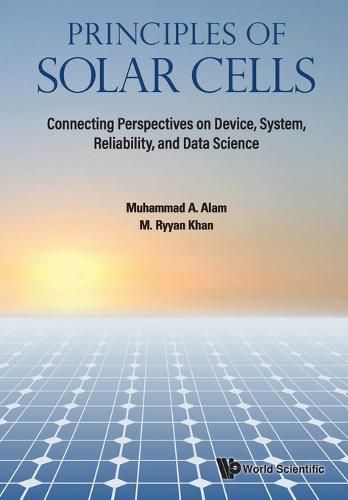Readings Newsletter
Become a Readings Member to make your shopping experience even easier.
Sign in or sign up for free!
You’re not far away from qualifying for FREE standard shipping within Australia
You’ve qualified for FREE standard shipping within Australia
The cart is loading…






This title is printed to order. This book may have been self-published. If so, we cannot guarantee the quality of the content. In the main most books will have gone through the editing process however some may not. We therefore suggest that you be aware of this before ordering this book. If in doubt check either the author or publisher’s details as we are unable to accept any returns unless they are faulty. Please contact us if you have any questions.
How does a solar cell work? How efficient can it be? Why do intricate patterns of metal lines decorate the surface of a solar module? How are the modules arranged in a solar farm? How can sunlight be stored during the day so that it can be used at night? And, how can a lifetime of more than 25 years be ensured in solar modules, despite the exposure to extreme patterns of weather? How do emerging machine-learning techniques assess the health of a solar farm? This practical book will answer all these questions and much more.Written in a conversational style and with over one-hundred homework problems, this book offers an end-to-end perspective, connecting the multi-disciplinary and multi-scale physical phenomena of electron-photon interaction at the molecular level to the design of kilometers-long solar farms. A new conceptual framework explains each concept in a simple, crystal-clear form. The novel use of thermodynamics not only determines the ultimate conversion efficiencies of the various solar cells proposed over the years, but also identifies the measurement artifacts and establishes practical limits by correlating the degradation modes. Extensive coverage of conceptual techniques already developed in other fields further inspire innovative designs of solar farms.This book will not only help you to make a solar cell, but it will help you make a solar cell better, to trace and reclaim the photons that would have been lost otherwise. Collaborations across multiple disciplines make photovoltaics real and given the concern about reducing the overall cost of solar energy, this interdisciplinary book is essential reading for anyone interested in photovoltaic technology.
$9.00 standard shipping within Australia
FREE standard shipping within Australia for orders over $100.00
Express & International shipping calculated at checkout
This title is printed to order. This book may have been self-published. If so, we cannot guarantee the quality of the content. In the main most books will have gone through the editing process however some may not. We therefore suggest that you be aware of this before ordering this book. If in doubt check either the author or publisher’s details as we are unable to accept any returns unless they are faulty. Please contact us if you have any questions.
How does a solar cell work? How efficient can it be? Why do intricate patterns of metal lines decorate the surface of a solar module? How are the modules arranged in a solar farm? How can sunlight be stored during the day so that it can be used at night? And, how can a lifetime of more than 25 years be ensured in solar modules, despite the exposure to extreme patterns of weather? How do emerging machine-learning techniques assess the health of a solar farm? This practical book will answer all these questions and much more.Written in a conversational style and with over one-hundred homework problems, this book offers an end-to-end perspective, connecting the multi-disciplinary and multi-scale physical phenomena of electron-photon interaction at the molecular level to the design of kilometers-long solar farms. A new conceptual framework explains each concept in a simple, crystal-clear form. The novel use of thermodynamics not only determines the ultimate conversion efficiencies of the various solar cells proposed over the years, but also identifies the measurement artifacts and establishes practical limits by correlating the degradation modes. Extensive coverage of conceptual techniques already developed in other fields further inspire innovative designs of solar farms.This book will not only help you to make a solar cell, but it will help you make a solar cell better, to trace and reclaim the photons that would have been lost otherwise. Collaborations across multiple disciplines make photovoltaics real and given the concern about reducing the overall cost of solar energy, this interdisciplinary book is essential reading for anyone interested in photovoltaic technology.